#decolonisingdesign
Text
Indigenous connections through mahi toi
As part of our summer intensive teaching course in our host school, it was required to create and develop a lesson for our tauira. Considering my cultural background, I wanted to create a lesson to connect Indigenous knowledge from Mexico and Aotearoa from a decolonising design perspective like my PhD research. During my PhD journey, I learned from my supervisor Dr Jani Wilson and her research in mahi toi that this term aligns better to my views on art, design and craft, different from the Western perspective where these are classified and assigned hierarchies. Therefore, approaching mahi toi practice seemed an appropriate and hands-on activity to be developed during class.
As part of our team teaching approaching Cultural Identity, I design a lesson for students to make an Indigenous Mexican mahi toi (aka artesanía). The following description and reflection were part of my submitted assignment.
Making a Sikuli, Ojos de Dios, God’s Eye

Learning Intention:
To understand and reflect on the importance of mahi toi (design, arts and crafts) for Indigenous people.
To connect Māori worldview with Indigenous Mexican worldview (Mesoamerica).
Success Criteria:
To build a God’s eye (Ojo de Dios, Si’kuli) from Huichol (Wixarika), Indigenous people from Mexico, and each student to connect it with Māori identity or value attaching a symbol/pattern or word in a mobile element at the bottom of the piece.
Reflection
Displaying mahi toi from Mexico (design, arts, crafts, textiles) around the room helped to raise the interest of the students towards the topic. It also helped to explore and understand what the students’ previous knowledge on the topic was. Also, the diversity of books like world atlas, archaeological, stories and comic books about Mexico was an easy introduction and an aid to settle the students on arrival or during the exercise. This different medium aligns to Ako from Te Kotahitanga (Bishop & Berryman, 2009) by providing different teaching strategies. It also provides a sensorial experience appealing students that are visual and kinesthetic, to mention some.

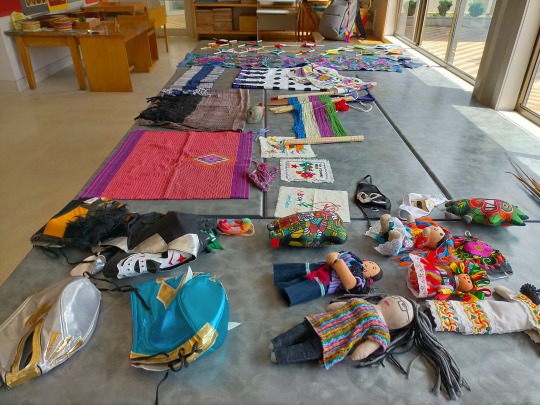
Connection to Te Ao Māori was directly shown in the work of some students. For example, one student described her work using the colour of the Tino Rangatiratanga flag. This aligns to Ako and the respect and understanding on Māori culture and beliefs (Bishop & Berryman, 2009).
Symbolism through colours scheme, and the connection of mahi toi with cultural identity and wellbeing is visible in the description of colours in relation to emotions. The New Zealand curriculum mentions the importance of wellbeing in students for effective learning and to support lifelong learning (Ministry of Education, 2007).

At the beginning, some sessions had a slow start requiring more encouragement and direct/personal demonstrations from my part to keep students engaged. Once the students understood and started the making process, they became engaged in the activity and kept working individually or alongside their peers.
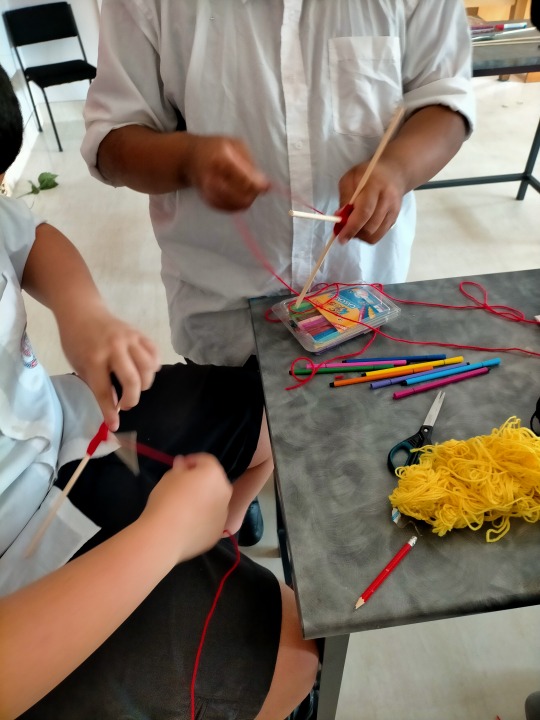
The last day of the session there were more students than scheduled. One student came back again after even though he took the same session on the first day, and two students who were not enrolled, perhaps because they missed the first days or because they belong to other classes, joined and they even created their own God’s eye, Si’kuli or Ojo de Dios.
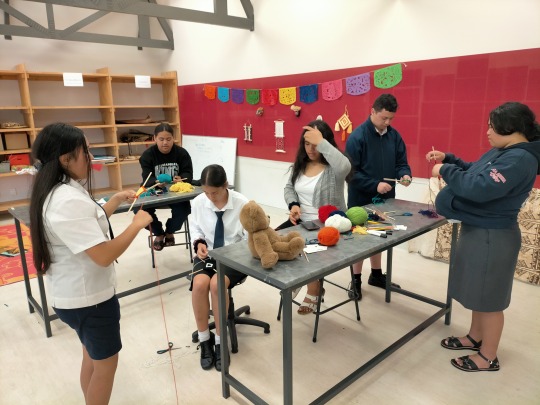
Also, in the last session, some students asked me to teach them dances we do in Mexico. So, we had an improvised dance session of Latin rhythms like cumbia and bachata. I think this last session was the most fun for all of us. They asked to take some pictures at the end of the class. These images became an important taonga of my experience. This experience link to the importance of developing strong connections with students through manaakitanga and whanaungatanga (Ministry of Education, 2011).
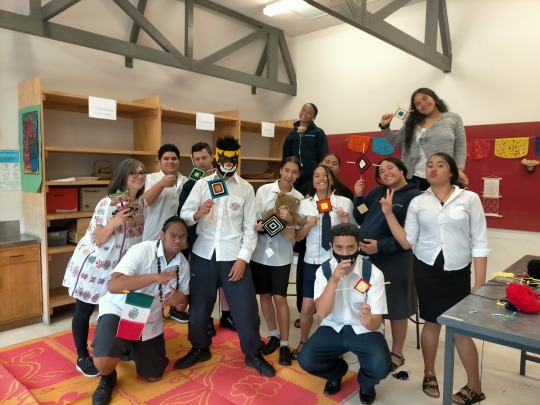
The installation in the presentation day showcased the results of the sessions, displaying los Ojos de Dios made by the students during the three days. The change of location for the installation brought uncertainty and lack of preparation from my side by not knowing the space. It is important to know the space in advance to plan accordingly.
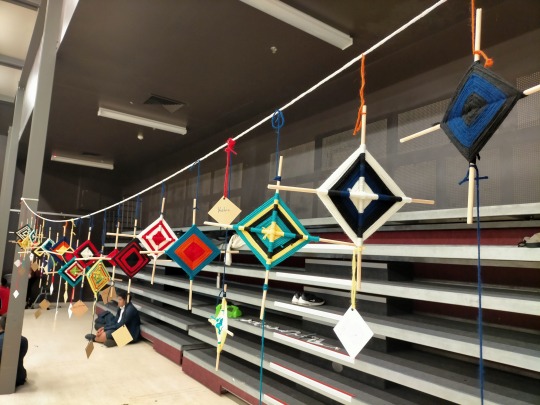
Connection to Standards
Standard 1: Te Tiriti o Waitangi partnership
Standard 2: Professional learning
Standard 4: Learning-focused culture
Standard 5: Design for learning
Standard 6: Teaching
#STP1#STP2#STP4#STP5#STP6#StandardsoftheTeachingProfession#MahiToi#Design#IndigenousKnowledge#DecolonisingDesign#CulturalIdentity
0 notes
Photo
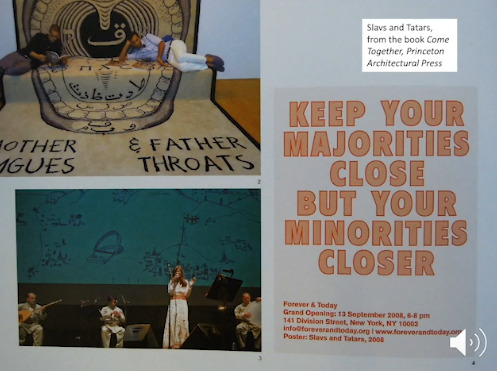
Week 12 Lecture
Recap + Decolonising Design
This week’s lecture we recapped about the previous lectures we had through the semester. Andy and Karen also added a bonus content with the topic of decolonising design. The idea of decolonising design is to open up our perspectives and look at questions of gender in design. Female designers are mentioned to not get as much recognition than male designers. However, nowadays female designers are thriving and getting more of the appreciation they deserve.
[Thought] This was the final lecture of the course, and after looking through at what has been discussed in the lectures, I realized how much it expanded my knowledge regarding the whole idea of design. I never really looked into how female designers have been underappreciated compared to male designers, but now I understand the issue more clearly and glad that is changing for the better of female designers.
Anni Albers
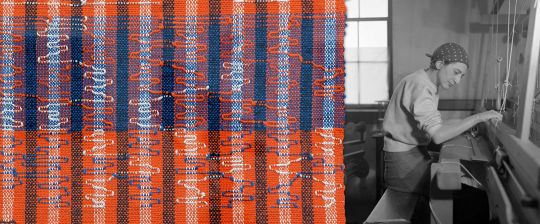
Anni Albers (12 June 1899, Berlin - 9 May 1994, Orange) was one of the most significant textile artists of the 20th century. She works with striking geometric patterns and her works are noted for a radical use of color that helped pioneer the Modernist movement. She studied under Martin Brandenburg and also with Paul Klee at the Bauhaus school, where she became a teacher herself. Throughout her life she experimented with materials and inspired a cultural reassessment of fabrics as an art form.
Tolu Coker
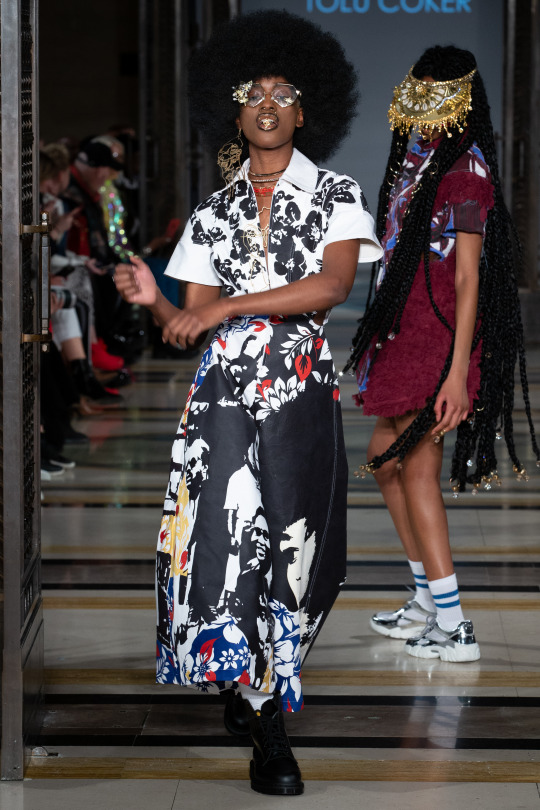
Tolu Coker is a young British-Nigerian Fashion Designer, Textile Designer and Illustrator from London. Following several successful stunts at Maison Margiela, J.W. Anderson and Celine, Coker graduated from the prestigious Central Saint Martin's Design school in June 2017 with First Class Honours. Mostly inspired by the politics of identity and social climates, Coker’s designs are influenced by her multi-disciplinary practice and artisan craftsmanship merged with the use of innovative technology.
Nina Katchadourian

Nina Katchadourian is an multidisciplinary artist whose work includes video, performance, sound, sculpture, photography and public projects. Her possibly most famous project is called the “Sorted Books”, in which Katchadourian rearranges the contents of private and public bookshelves so that the books’ spines read as a consecutive statement. Other series have featured such idiosyncratic subjects as subway maps, mascots of common cleaning products, the sound of popping corn, car alarms, birdcalls, and items available on airplane flights.
image 1 is from the lecture
image 2 https://www.tabletmag.com/sections/arts-letters/articles/anni-albers-tate-modern
image 3 http://www.tolucoker.com/
image 4 http://www.ninakatchadourian.com/languagetranslation/sortedbooks-bookpace.php
Resources:
http://www.artnet.com/artists/anni-albers/
http://www.tolucoker.com/new-page
http://www.ninakatchadourian.com/bio.php
https://www.artsy.net/artist/nina-katchadourian
0 notes
Photo

I ❤ my nerd hole #PhDLife #PhDResearch #Design #Research #DesignResearch #DecolonisingDesign #Decolonisation #Decoloniality #Indigenous #IndigenousDesign #Mayan #Textiles #Chiapas #BuenVivir #LekilKuxlejal #EZLN #Zapatista #Mexico #Aotearoa #Corazonar #Corazonando #Sentipensante #MujeresConLaDignidadRebelde (at AUT - Auckland University of Technology) https://www.instagram.com/p/B2xdh6YjJ-e/?igshid=14d3gpvmxpmbs
#phdlife#phdresearch#design#research#designresearch#decolonisingdesign#decolonisation#decoloniality#indigenous#indigenousdesign#mayan#textiles#chiapas#buenvivir#lekilkuxlejal#ezln#zapatista#mexico#aotearoa#corazonar#corazonando#sentipensante#mujeresconladignidadrebelde
0 notes
Photo
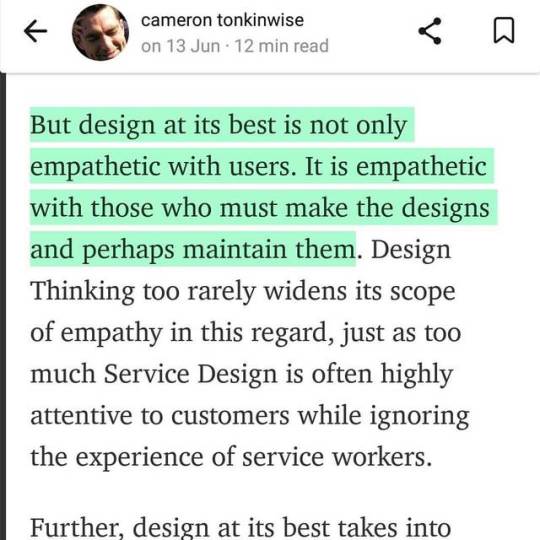
I wonder how many #designers actually think about this. Specially relevant in mass-produced pieces. #design #phdstudent #phdresearch #ethicalconsumption #decolonisingdesign #responsibledesign
5 notes
·
View notes
Text
My voice in the background story: my PhD thesis preamble
[This section is the opening on my submitted PhD thesis, under examination atm]
I am a woman and mother from the south, born and raised in the state of Chiapas, Mexico. Since childhood, my family and I have often visited San Cristóbal de las Casas, a picturesque city surrounded by hills, that maintains its Spanish colonial layout and architecture, with red tile rooves, cobblestone streets, and wrought iron balconies, often strewn with flowers. This city is still considered the culture capital of the state due to its history and Indigenous population.
Visiting the mercado (market) of Santo Domingo was an important part of our weekend trips. This outdoor market remains a colourful display of Indigenous crafts surrounding the beautiful eponymous church, and its side chapel Templo de la Caridad. The stalls are filled with creative and ancestral traditions such as textiles, embroidery, saddlery, basketry, jewellery, and stones. Over the years, I became consciously aware of how the motifs, colours and styling of the displayed garments were evolving. I also started to notice the emergence of crafts from other Latin American countries, now contrasting with mass-produced pieces from Mexico, Latin America and Asia. I started my studies as an industrial designer, and these changes became increasingly evident, further piquing my interest in the development, quality, making and meaning of crafts. It turned into an obsession. I regret not keeping all of the garments acquired since I was a child, or at least not taking pictures of them to retain a visual record of the evolution.
After graduating and working for a couple of years, I moved to Spain to do a master’s degree in design management and product development. In the coloniser’s land, I questioned many things about identity, race, ethnicity, gender roles, social inequalities, migration, and colonisation, amongst others; it was a face-to-face encounter with my “otherness”. Until that point, I had been a middle-class Mexican mestiza woman. Living in Europe made me discover that I was a Latina, a “Sudaca” (pejorative term for South Americans), and a migrant, and I had to unlearn the conditioned “pursuit of civility” and make a firm decision to root myself better in my own land and culture.
Back in Mexico, I got my first job in design education, married, and continued to “follow the script” for a woman of my age and socio-economic status. But I dreamt of collaborating with Indigenous communities to “help them improve” their work in things like quality, standardisation, and the creation of new products that were more suitable to a contemporary lifestyle. I was certain design could impact their crafts and communities in a positive way, and because of this, I wanted to co-ordinate designer-artisan collaborations around the world. This led me to apply for a Japan International Cooperation Agency (JICA) scholarship for the training programme in Modern Design and Traditional Craftsmanship in Japan, which I was fortunate to obtain. In 2009, I spent nine months under the tutorship of Yamamoto sensei from the Kyoto Institute of Technology, and was awed by the beauty of making Japanese crafts under such distinguished masters. The result of this programme was the creation of a design guide for artisans in Mexico in collaboration with my two fellow design kenshuin (trainee). We blended the Japanese learnings, observations, design, creativity, and ways of making crafts, with traditional Mexican games, to make the design process enjoyable, familiar and non-invasive.
Life continued on my return to Mexico, and my daughter was born in 2011. The same year, we moved to Singapore (where I could not legally work), for my former husband’s job, away from family and friends. I learned to be a mother, and an “ex-pat” wife, largely in isolation. There were multiple challenges in this new land, but travelling around South East Asia kept me afloat. In my disconnection from home, exploring culture and crafts became my focus and saviour. The contrast between Singapore’s affluence and the neighbouring “underdeveloped” countries further ignited my sense of social justice and fuelled a desire to walk alongside those communities. After three years in Singapore, fortunately, an opportunity to go to New Zealand emerged, and we moved again.
The many journeys through various countries, cultures, and identities, shifted my views of crafts, which, despite my conventional design training, I now considered as art. I was more interested in the artisanal communities, and their understandings and ways of embracing heterogeneity, rather than standardisation and universalisation, and the exploration of links between art-design-crafts to nature-culture, as well as the importance of creative-art practices to individual and collective well-being.
Life’s challenges continued.
In July 2015, I started a part-time lecturing position in the School of Art and Design at Auckland University of Technology, and in March 2016, I was accepted into a PhD programme. It was also the month my marriage ended. The support of Dr Amanda Bill, my manager and supervisor support, at that time was crucial. After a few months, I took leave from my PhD while I taught more hours to support myself and my daughter, and applied for a Vice-Chancellor’s scholarship, of which I was an incredibly blessed recipient. I restarted the research journey in January 2017. During my PhD years, institutional and life changes impacted my research, resulting in a change of faculty from Design and Creative Technologies to Te Ara Poutama – my current whare (house) - where I was warmly welcomed. I have had five official supervisors and one non-official one, due to my change of faculty. I have learned from the words and actions of all of them.
I have been fortunate to attend many Māori and Indigenous research and design events in Aotearoa-New Zealand, Australia, and Canada, sharing with other “mixed” Indigenous people like myself. From them I learned that mixed ancestry does not erase our Indigenous heritage, and one identity is not exclusive to the other, but rather, they co-exist.
Parallel to the PhD life, and ignited by life’s struggles as an “ethnic migrant solo mother”, I started to volunteer in community projects, particularly in the Latin American community. I was invited to be a board member for a non-for-profit organisation working with refugees and migrants using design and co-design; I participated in forums and conducting workshops; I returned to creative and activist practice through textiles; I co-founded the Buen Vivir women’s collective and joined the Sororidad Latina group, involving my daughter in everything. Using art and textiles, I joined public demonstrations against racism after the March 15th terrorist attack in Christchurch. I fought gender and diversity inequality in design, climate change, and denounced femicide in Latin America to mention only a few.
While the past four years have been transformational professionally and personally, I understand these are but a series of short cycles in a life-long journey. In some ways, I consider this PhD to be the formal approach to a topic that has always been an incredibly pivotal component of my heritage, and central to my life: namely, culture through art-design-crafts, particularly textiles. I am fortunate and grateful that this part of my identity can form the basis of PhD research. I have learned much about this from mis compañeras of Malacate Taller Experimental Textil (independent textile collective and research partners), Mayan artists and scholars, and their embodied experiences of knowing, doing and connecting. Bonding with these wise women who live/practise their ancestral knowledge has been a true privilege. Nevertheless, the lived experiences of being Indigenous and the onto-epistemic guidance from tangata whenua (people of the land) in Aotearoa, from my supervisor, and research and design whānau (family/community), all contributed significantly to this research.
Throughout these years, I have learned much about myself, to understand my processes as a primarily sentipensante being, and to accept, respect, balance, embrace, and use it positively. I could understand I am someone who feels first, strongly and deeply, needing to let the emotions emerge. However, dealing with people, balancing the emotions of the heart with the reasoning of the mind, to question, understand, and process my feelings, is paramount. I learned I must comprehend other peoples’ emotions, listen to their stories, make sense of their backgrounds, and establish connections from a place of empathy, from the heart. Most importantly, I learned that after the processes of feeling and thinking, the final decision needs to make sense, to have meaning, and for this, it needs to come from the heart. For me, being corazón is not the romantic view of love where everything is positive. Yollotl (corazón in Náhuatl, one of my ancestors’ languages) is emotions; anger, sadness, happiness, fear, to mention some, but it is also the source of courage, passion and peace.
Many transformations have happened in Aotearoa, Latin America and around the world, that have shifted old ways of knowing and doing, towards new possibilities. The Latin American movements in Bolivia, Ecuador, Colombia, Venezuela, Brazil, Chile, Haití, Argentina, and México, have inspired and triggered me to participate and contribute whenever and however I can.
At this point, I say I am a mother, a feminist, an activist, a researcher from the south (re)connecting with indigeneity. I am sentipensante, I am Yollotl, I am uno con el todo (one with the whole). This is my truth.
This work is dedicated to my sisters, brothers and third spirits in Cemanáhuac (the Americas), to weavers and anyone familiar with the language of the threads; to women, to mothers (especially solo mothers), to my feminist sisters, a mis hermanas de AbyaYala, a mis sororas…
Con todo, si no, ¿pa´qué? (Give it everything, otherwise, what’s the point?)
(Feminist chant)
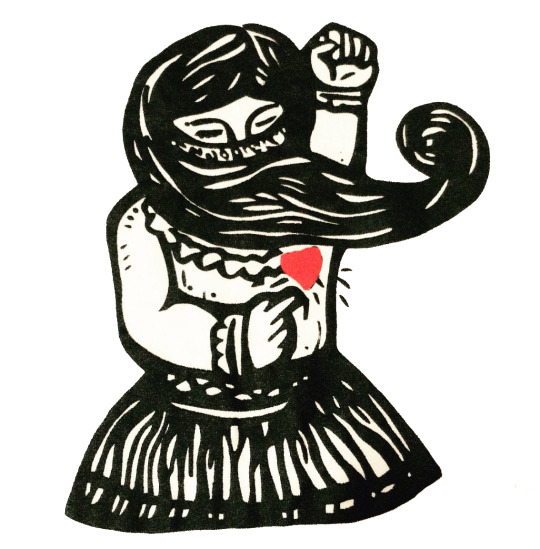
#PhD#phd thesis#phd life#phd research#Buen Vivir#feminist#south#nativelatinamerican#latin america#abya yala#indigenous#indigenous studies#decolonisation#decolonial#decolonize#design#decolonisingdesign#woman#mother#native#latina#sororidad#sorority#sentipensante#corazón#corazonar#heart#yollotl#epistemologiesofthesouth#mexico
1 note
·
View note
Link
I feel I found the right approach to our research
#phd life#phd research#PhDstudent#decolonisingdesign#decolonisation#artisanaldesign#diseñoartesanal#diseño#diseñoindigena#indigenousdesign
0 notes
Link
Presentation for Pechakucha Vol. 34. Weaving the Strands of Indigenous Creativity.
I hope the message was received despite the rush and nervousness.
#indigenousdesign#diseñoartesanal#diseñoindigena#diseñoartesanalmexicano#decolonisation#Decolonization#decolonisingdesign#indigenousart#indigenousculture
0 notes
Photo

Extrañando las conversaciones con una maravillosa mujer de gran corazón y fortaleza, maestra antropóloga social, luchadora por los derechos de las mujeres y artesanas. Gracias por todas tus enseñanzas @namaste.karla. Estoy segura que estas pasadas semanas son sólo el inicio de un camino largo juntas. Missing the conversations with a wonderful woman with a great heart and strenght, master social anthropologist, fighter of women and indigenous rights. Thank you very much for all your teachings. I'm sure these past weeks are just the beginning of a long journey ahead together. #decolonisingdesign #fieldresearch #anthropologist #indigenousrights #womenrights
0 notes
Photo
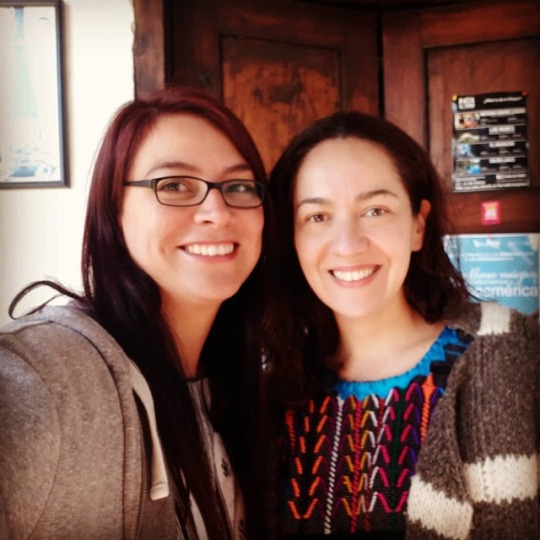
Un placer conocerte, @chamuchula, y gracias por tu tiempo y tan interesante conversación. #diseñoartesanal #decolonisingdesign (at San Cristóbal de Las Casas, Pueblo Mágico)
0 notes
Photo
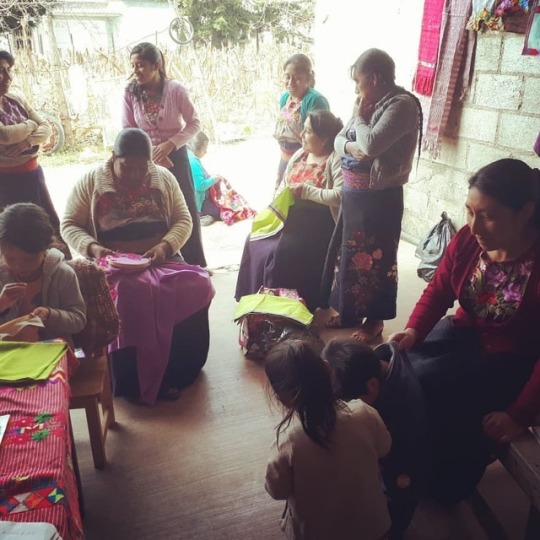
What have I learned from #fieldresearch with an amazing #indigenous #tsotsil community in #Chiapas? That there is no separation between family life and "work". Weaving and embroidery is part of #life. So fortunate I could share it with my #daughter and #mother as well. #lessonsfromthefield #indigenouswisdom #indigenousdesign #decolonisingdesign (at Zinacantán)
#chiapas#tsotsil#mother#indigenouswisdom#life#daughter#lessonsfromthefield#indigenous#indigenousdesign#decolonisingdesign#fieldresearch
0 notes
Photo
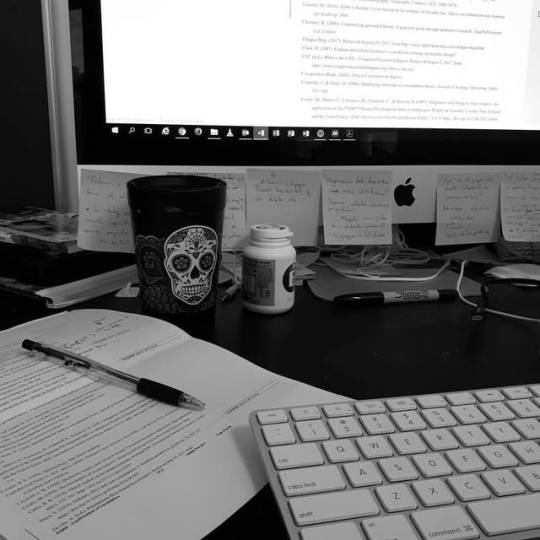
#phdlife #phdstudent #phdmama #decolonisingdesign #indigenousdesign #blackandwhitephotography #blackandwhitephoto #bwphoto #bwphotochallenge (at AUT - Auckland University of Technology)
#bwphotochallenge#decolonisingdesign#phdmama#phdlife#bwphoto#blackandwhitephotography#blackandwhitephoto#indigenousdesign#phdstudent
0 notes
Photo

#phd #phdlife #phdstudent #almamater #autuni #design #decolonisingdesign #indigenousdesign (at AUT - Auckland University of Technology)
0 notes
Photo
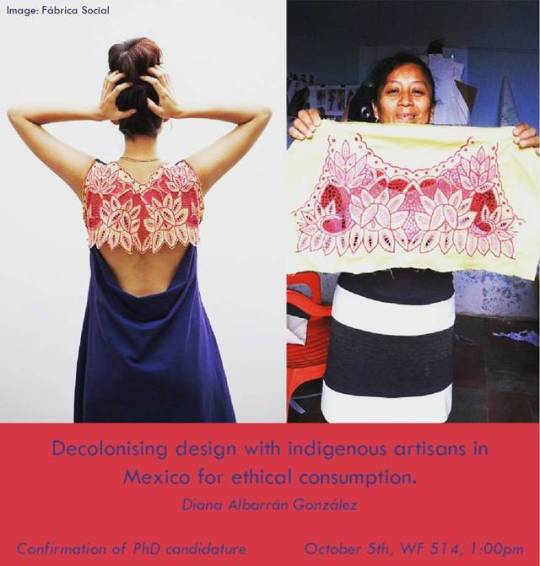
First year #phd presentation is near! #phdstudent #phdmama #phdresearch #decolonisingdesign #decolonization #design #indigenousdesign #artisans #ethicalconsumption #Mexico #NZ (at AUT - Auckland University of Technology)
#design#phdstudent#indigenousdesign#decolonisingdesign#phd#phdresearch#artisans#ethicalconsumption#decolonization#mexico#nz#phdmama
0 notes
Photo
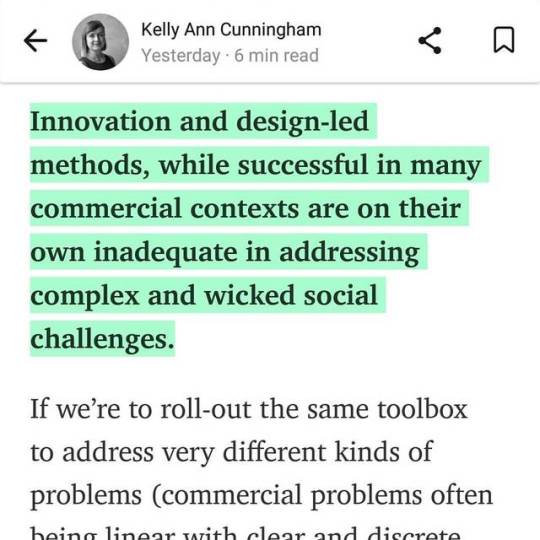
Another great quote about #design. Very relevant towards working with marginalised communities. #phdresearch #phdstudent #decolonisingdesign
0 notes
Photo

I find #Tonkinwise articles very insightful. I know exactly which one I like #design #designthinking #phdstudent #phdresearch #decolonisingdesign #decolonisation #respectfuldesign
#decolonisingdesign#design#tonkinwise#designthinking#phdstudent#decolonisation#phdresearch#respectfuldesign
0 notes
Photo
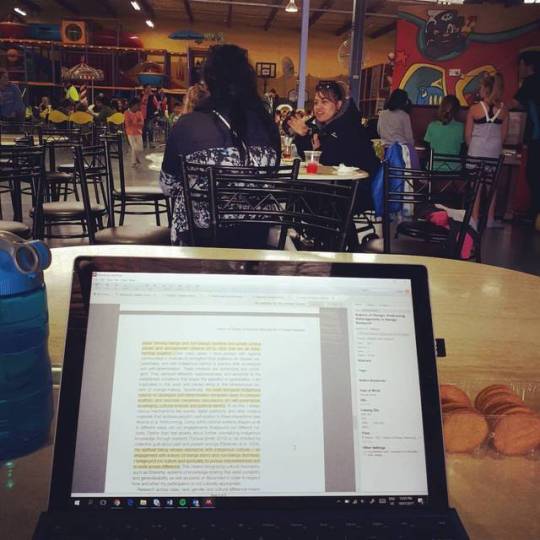
This is how my research looks like on school holidays. Hard to focus with all the noise! #phdmama #phdstudent #schoolholidays #decolonise #design #decolonisingdesign
0 notes